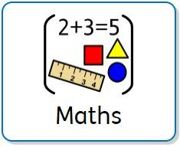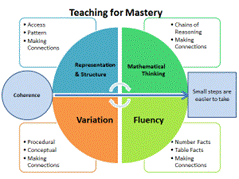Maths
In Maths, we aim to deliver a practical and engaging curriculum that enables children to become confident and independent mathematicians. Mathematics at Barton Hill Academy is fundamentally linked to real life experiences and is intertwined with reasoning and investigative skills that develop a lifelong love of problem solving; empowering them to thrive in an ever-changing world.
to become confident and independent mathematicians. Mathematics at Barton Hill Academy is fundamentally linked to real life experiences and is intertwined with reasoning and investigative skills that develop a lifelong love of problem solving; empowering them to thrive in an ever-changing world.
The aims of mathematics teaching at Barton Hill Academy:
- To develop a positive attitude to mathematics;
- To develop a strong understanding of number and calculation;
- To develop children’s reasoning, logical thinking and problem solving skills;
- To ensure that all children will be given the opportunities to develop their mathematics skills;
- To provide rich mathematical experiences, where children can apply their knowledge of mathematics to everyday life;
- To explore and enjoy the patterns in mathematics and to solve a wide range of puzzles and problems.
Rationale
The classroom practice and school organisation for teaching mathematics at Barton Hill Academy is underpinned by the ‘teaching for mastery’. ‘Teaching for mastery’ allows children to acquire a deep, long-term, secure and adaptable understanding of the subject. Our curriculum and classroom practice have been designed, through this methodology, so that it combines to give the pupils the best chances of mastering maths. Teachers use White Rose as a guide for sequencing, however they tailor their approach to suit the needs of the individual students and classes.
A central component of ‘teaching for mastery’ is the ‘Five Big Ideas’. Drawn from research evidence collated by NCETM, these ideas are the building blocks of teaching for mastery. This is the diagram used to help bind these ideas together:

Coherence
Lessons are broken down into small, connected steps that gradually unfold the concept, providing access for all children and leading to a generalisation of the concept and the ability to apply the concept to a range of contexts.
Representation and Structure
Representations used in lessons expose the mathematical structure being taught, the aim being that students can do the maths without recourse to the representation
Mathematical Thinking
If taught ideas are to be understood deeply, they must not merely be passively received but must be worked on by the student: thought about, reasoned with and discussed with others
Fluency
Quick and efficient recall of facts and procedures and the flexibility to move between different contexts and representations of mathematics
Variation
Variation is twofold. It is firstly about how the teacher represents the concept being taught, often in more than one way, to draw attention to critical aspects, and to develop deep and holistic understanding. It is also about the sequencing of the episodes, activities and exercises used within a lesson and follow up practice, paying attention to what is kept the same and what changes, to connect the mathematics and draw attention to mathematical relationships and structure.
Implementation
All Children are taught in mixed ability classes.
EYFS
The EYFS curriculum focuses on the early indicators of success in maths. These are the fundamental skills that the children need to know in order to be successful in mathematics as they progress through the school. The children learn what truly makes a number, the key features of shape and pattern spotting, through a practical and real life approach. They are exposed to an in depth and enjoyable curriculum that lays the foundations for mathematical understanding whilst also progressing towards their early learning goals.
KS1 & KS2
White Rose Maths forms the basis for our long-term planning: setting out the expectations in each year group and aiding with small step sequencing. The planning is adapted through understanding of the cohort’s needs and school’s calculation policy to meet the needs of each child.
All concepts are taught in a real-life context to develop a long-term, deep, secure and adaptable understanding within their year group objectives.
Units covered in each year group are as follows:
Year 1
Key indicators, number addition and subtraction, multiplication and division, fractions, measurement, geometry.
Year 2
Year 1 root facts, place value, addition and subtraction, multiplication and division, fractions, measurement, geometry, statistics.
Year 3
Year 1 and 2 root facts, place value, addition and subtraction, multiplication and division, fractions, measurement, geometry, statistics.
Year 4
Place value, addition and subtraction, multiplication and division, fractions, measure, geometry, statistics.
Year 5
Place value, addition and subtraction, multiplication and division, fractions, measure, geometry, statistics.
Year 6
Place value, addition and subtraction, multiplication and division, ratio and proportion, fractions, algebra, measure, geometry, statistics.
Planning
Teachers begin planning with a clear understanding of the year groups aims set out by the national curriculum (through White Rose sequencing) and only cover those objectives – as per the mastery approach. Mathematics is planned through an objective led approach. Teachers begin each unit with an elicitation activity to understand all children’s ‘starting points’ and then use this to inform their planning.
Planning is/does:
- Good practice is to elicit children’s understanding.
- Handwritten and adapted a few lessons at a time.
- Reflects opportunities for concepts to be applied in a range of contexts before moving on;
- Shows that the year group specific mental oral skills are being covered as well as revising previous units;
- Shows the steps to success that will be created with children outlined in advance by the teacher;
- Written planning is done for the teacher only and is minimal. This allows more teacher time to reflect on and adapt lessons/prepare resources. As a school we value that this has more impact.
Teaching
Teaching of mathematics at Barton Hill Academy adopts the CPA (concrete, pictorial, abstract) approach to lessons. All concepts are introduced through story (where appropriate) and with concrete resources for children to feel and manipulate. Children are trained on the use of Numicon, Dienes and Place Value Counters to support their learning. These resources are always at hand in the classroom and the children should be trained to have the initiative to use them when they feel they need to. As their conceptual understanding develops, they move towards the pictorial and abstract stages.
Children are not pushed to move through these stages until they have shown understanding gained by the teacher through assessment for learning.
The teacher’s role in lessons is to:
- demonstrate a clear model – this is to remain on display throughout the lesson for children to access and refer to and illustrates the success criteria.
- create steps to success with the children
- allow time for discussion and pair work
- continually assess children’s understanding using multiple hinge questions
- provide support or scaffolding when needed
- present challenge and to develop understanding through expert questioning.
Visualisation is a core mathematical skill. Teachers provide many opportunities for children to explain their understanding by writing or drawing what they understand. Teachers use this to uncover misconceptions, assess and then challenge children.
In addition to this, teachers use ‘immediate application’ to embed concepts. Each lesson is delivered through a variety of vehicles/variation of materials/images and ensure children are applying instantly. E.g. 10 x10 = 100, 10 x 10 cats = 100 cats etc.
Developing a keen number sense is a vital part of our maths curriculum. Children are always asked to explain how they know an answer and if they can show it a different way/an easier way to build upon their conceptual understanding.
During the lessons teachers create AfL opportunities to ensure the inclusion and challenge is right for all. Marking independent work regularly; questioning and then providing additional support and ‘I do’, ‘We do’, ‘You do’ are strategies embedded in the school to continually check children’s understanding.
| Subject Documents |
|---|
| BHA Calculation Policy |
| BHA Maths Progression Document |

